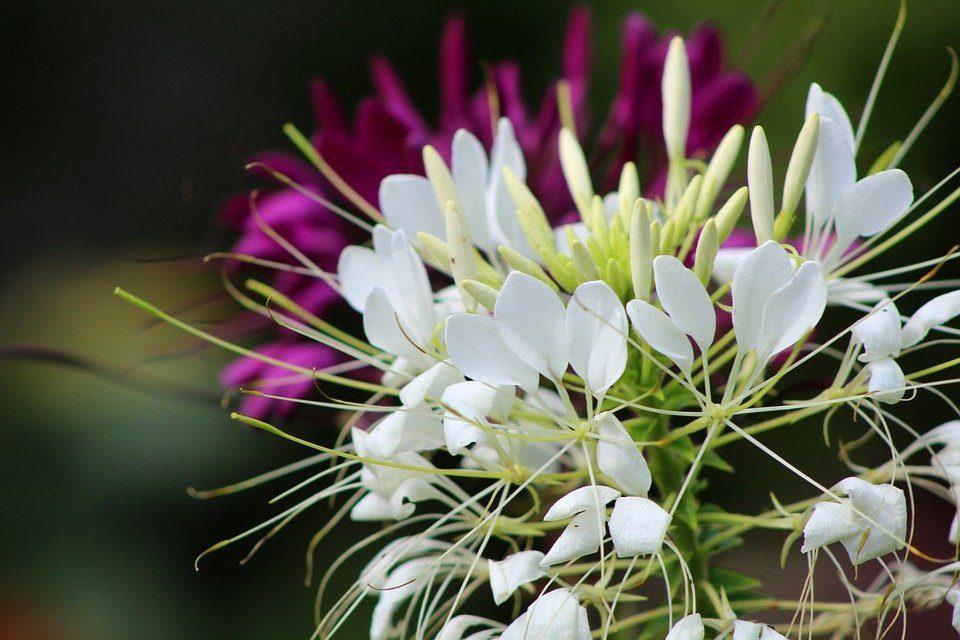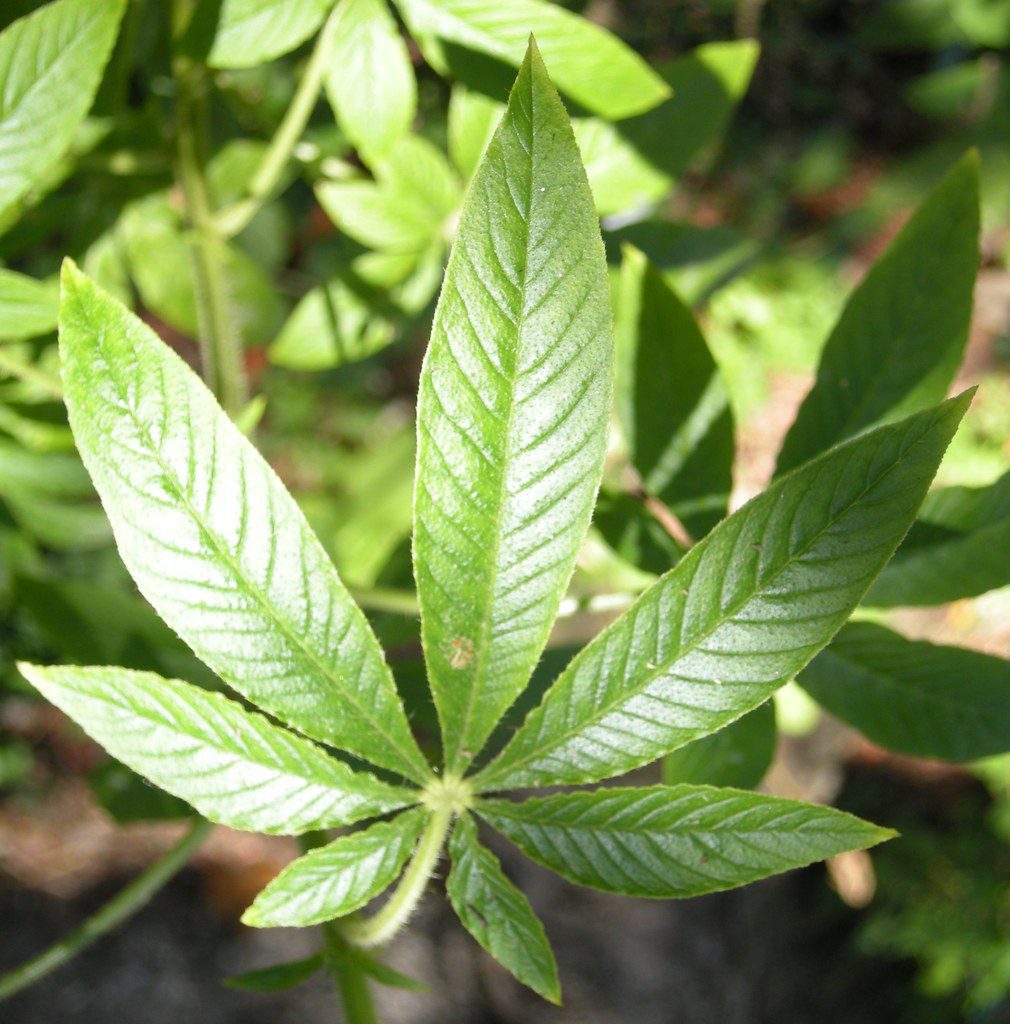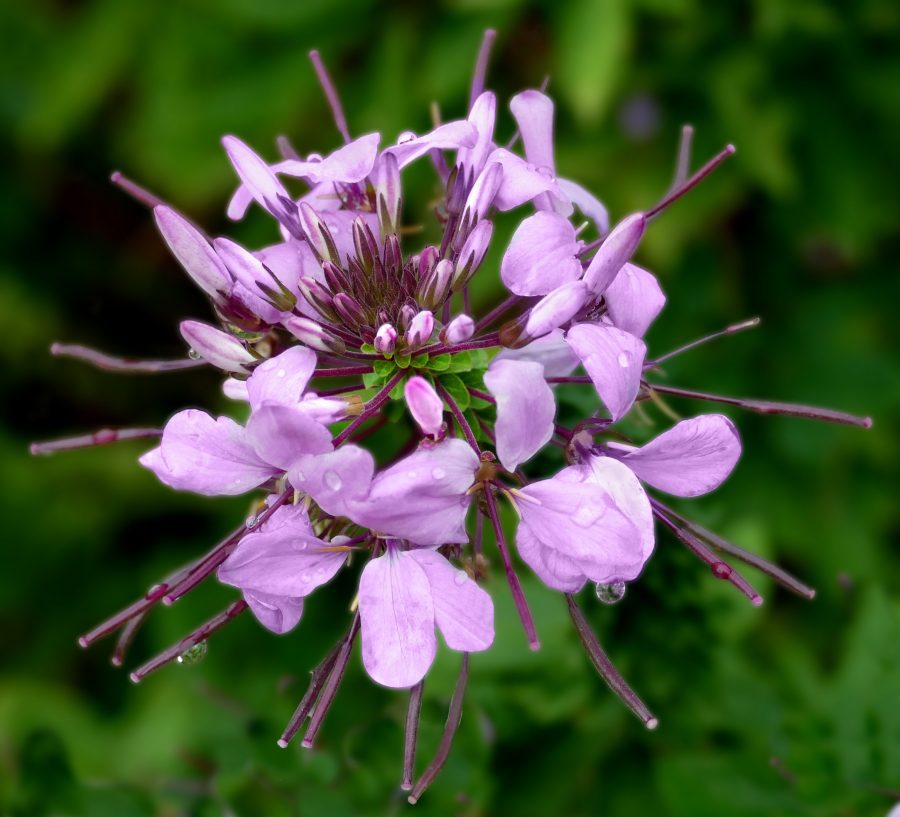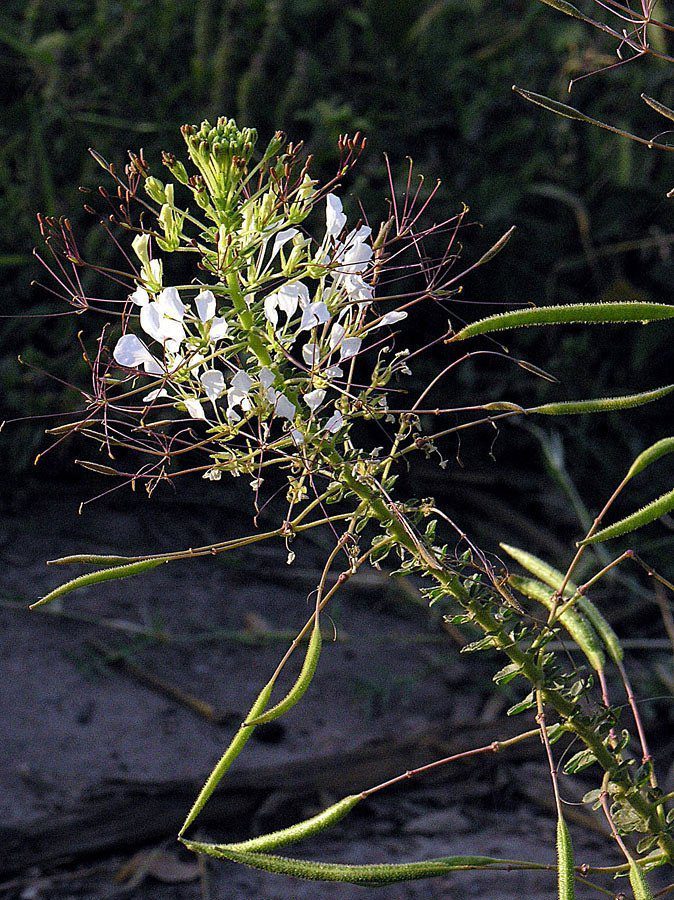Flower of the Day, Cleome Spider Flower: Plant Just Once

Spider Flower, Bee plant, cleome. This tall flowering plant is like the gawky girl that doesn’t get asked to dance in junior high school, but becomes a model when she’s 16.
The cleome doesn’t look like much in a nursery. Well, actually, it does look like a baby marijuana plant. Cleome, below top, are often mistaken for pot plants, below: showing the same flat, hand-shaped leaf formation.


But cleome come into their own once they burst into flower. White, pink, rose and purple, they bloom from midsummer until fall. They are easy to grow from seed, although they like to be left on top of the soil, or barely covered. Once they start growing, they are laden with spidery seed pods. But that doesn’t stop them.
They keep flowering, and climbing. They do not need staking, even when six feet tall.
Nearly immune from garden pests, able to grow in any kind of garden soil and, once established, able to thrive without regular watering, these lesser-known plants deserve to become stalwarts. And if anyone stops by to admire your cleome, just zip off a ripe seed pod and hand it to them. Each whisker becomes a seed pod, and each pod can hold up to 18 seeds. Your friend will be off to the races. They will either love you or, if the cleomes take over their garden, hate you.
Consider planting a pink-and-white garden: low-growing early dianthus in front. Then more dianthus, Sweet William, and hot pink globe amaranth. Behind that, pink and white cosmos. And in the back row cleome. Bee balm could be slipped in there somewhere for a full-service pollinator garden. The bees will love you. Or use Sparkler Rose, below, a dwarf version of cleome that grows “only” four feet tall but, like its taller sister, will still attract hummingbirds, butterflies, bees and hawk moths.

Now hear this. Most people buy the hassleriana variety cleome, the ones at garden centers and sold in seed packets.
You can stump visitors (the ignorant ones who have already accused you of growing pot and the knowledgeable ones who know cleome) by going outside the local nursery and the Park Seed catalog.
There are hundreds of varieties of cleome, including some beauties from Mexico that were shown at the Chelsea Flower show in May. This is Senorita Rosalita, a shorter, sterile variety.
It won’t self-seed. It won’t tower over everything else. It won’t look like the other cleomes. One variety looks like this:

Proven Winners’ version looks like this:

They both promise profuse flowers, since the plants’ energy is focused on flowers rather than seeds. That means they won’t throw their seeds all over your gardens.
And then there are the edible cleomes. George Washington and Thomas Jefferson both grew the cleome hassleriana. But Thomas Jefferson also grew a cleome called Spiderwisp, cleome gynandra, a relative of the mustard plant used as a seasoning in Africa. There is no question that the slaves at Monticello brought their knowledge of plants, and perhaps some plants, with them.
Cleome in is a tropical, subtropical plant. It is perennial in zones 10 and 11. It is likely Jefferson ordered cleome gynandra from Bartram’s nursery catalog, where it had already appeared by 1809. (The decorative and inedible plant does not show up; those seeds were probably shared among neighbors.)

This plant, also known as Spiderwisp, was highly prized as a seasoning. The early slaves, farmers and botanists valued each others’ knowledge. The Spiderwisp (also called Cat’s Whiskers, because of the long stamens typical of all cleomes) has four-petaled flowers, just like the mustards, seed pods similar to mustards, and its cooked leaves taste similar to radishes.
We have to stop here and note that there is a long-standing DNA investigation of the connection between cleome and the Brassicaceae (mustard) family. It’s hard to believe, but there is still a question on how and when these two families diverged.
For instance, Spiderwisp’s oil is closer to garlic. So is it mustard? Radish? Garlic? Whatever it is, all over Africa parts of the plant were used to season stews and meats.
Mind you, as much as it looks like cleome hassleriana, it is not the same plant. Back in Jefferson’s time, slaves and slave owners knew how to tell the difference.
Today, perhaps we should look more carefully at our flowering plants.
Some are pretty. Some taste good. Some are even medicinal.
There is a difference. – Linda Lee
